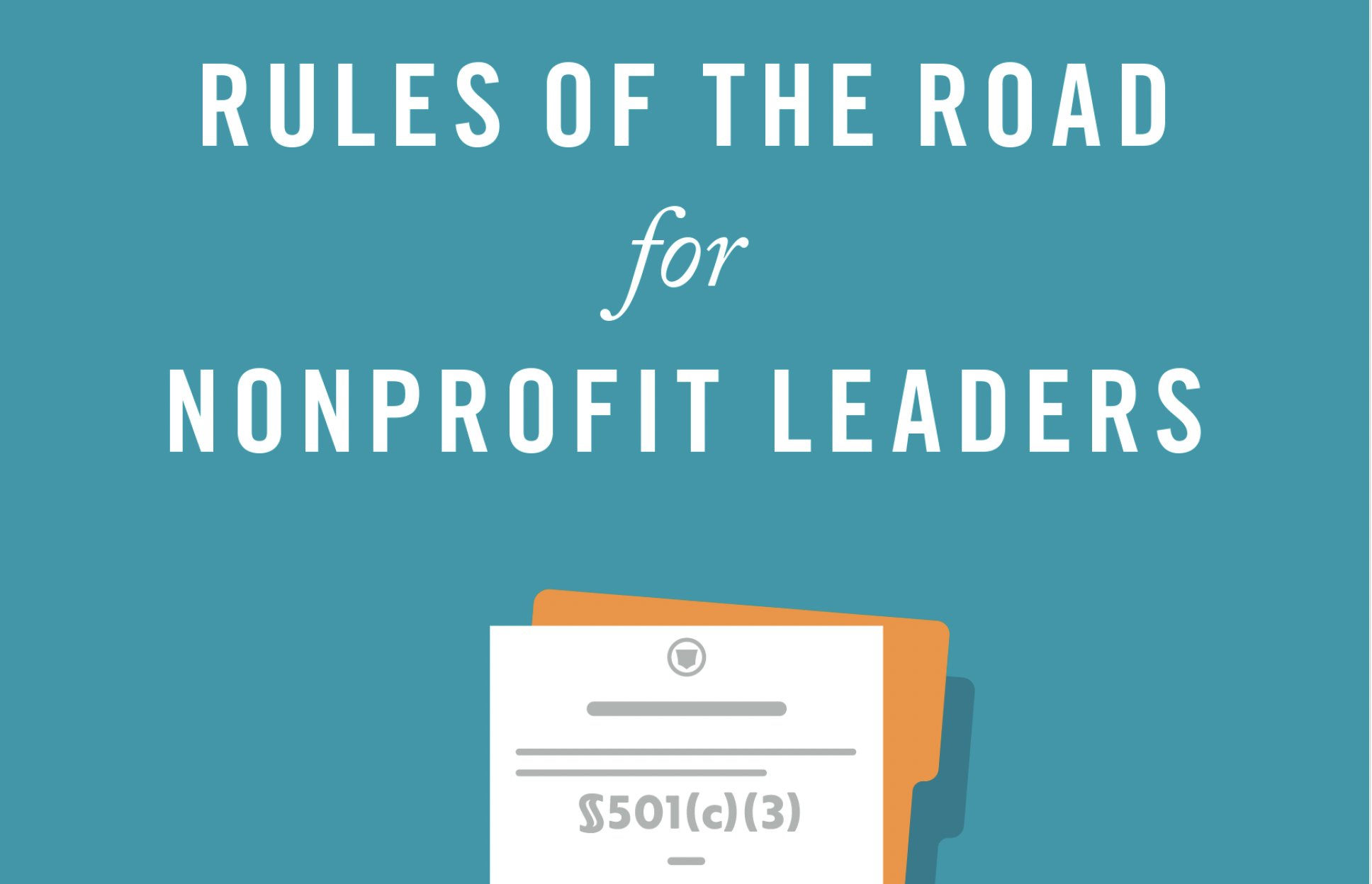
It’s exciting to learn of a new book on nonprofit law written for nonprofit leaders. Rules of the Road for Nonprofit Leaders is both accessible to persons who are not lawyers and helpful to lawyers who dabble in this practice area.
Author Elizabeth M. Schmidt is a professor of practice at the School of Public Policy in the University of Massachusetts Amherst who specializes in nonprofits, social enterprises, and policy analysis. Below are some of the highlights from the book:
Introduction
The nonprofit law that has developed to date can be broadly summed up in two principles that encourage integrity and purpose: (1) keep the mission paramount, and (2) don’t profit individually and unfairly from the nonprofit.
Eight Commonsense Precepts (each covered in a separate chapter)
1. Keep the mission front and center.
2. Govern wisely.
3. Fill the coffers.
4. Go into business?
The short answer is that §501(c)(3)s can engage in considerable commercial activity if they keep in mind the questions the IRS could raise when commercial activity occurs: (1) Is the activity arguably too commercial to further the charitable purpose? (2) Does the commercial activity bring in unrelated business income? and (3) Does use of a for-profit subsidiary of a §501(c)(3) solve these issues or create new ones?
5. Treat your friends and colleagues well—just not too well.
6. Advocate for your cause.
We owe it to our missions – and to those we serve – to include advocacy in our toolkits. It’s time we emulated the nonprofits of the past that helped bring about women’s suffrage, civil rights gain, and health care reform, among others. Fear of being “too political” is no longer an excuse.
7. Complete the paperwork.
8. Know how to change course.
Ultimately, neither the nonprofit structure nor nonprofit law is strong enough to counter the force to commercialize artificial intelligence. Two other observes of the OpenAI soap opera in 2023 have made this point far better than I could. Journalist Ezra Klein noted, “The nonprofit board was supposed to be able to push the off button. But there is no off button.” Or stated in Nathan Benaich’s terms, “It was an experiment to defy the laws of corporate physics, and it appears that physics won out.” A tool with as much potential for both good and evil will need more than nonprofit law to regulate it.
I smiled reading this passage as I made this same conclusion when participating on a panel at the 2024 ABA Tax MidYear Meeting – Can Nonprofit Governance Contain Artificial Intelligence?
A Constructive Way Forward
The final chapter in the book explores the author’s desired changes to the laws. Professor Schmidt also discusses proposals to encourage immediate distribution of funds, problems with enforcement, and governance. Her conclusion starts with the following first paragraph:
What would the nonprofit regulatory system look like if it were designed to help nonprofit leaders achieve their mission? It would be simpler, and its rules would be stated affirmatively whenever possible. Some boundaries would be better defined. We’d have a much better idea of the line between charitable and commercial organizations, and we’d know when a charitable organization is too political to deserve exemption. Other boundaries, such as the line between foundations and public charities, might disappear.